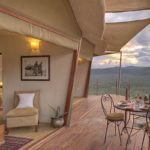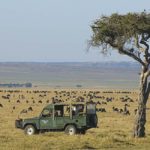Mount Kenya climbing tours
Mount Kenya climbing tours
Mount Kenya is one of the world’s famous big mountains. Mt Kenya is Africa’s second highest standing mountain and the highest of all Kenya Mountains.
At a height of 5199 meters above sea level. Climbing Mount Kenya climbing tours has three peaks, Batian 5,199m being the most difficult climbing peak, Nelion 5,188m second difficult climb and point Lenana 4,985m.
Other major summits on the mountain include Point Piggott 4,957m, Point Dutton 4,885 and Point John 4,883m.
From the Mt. Kenya’s three main peaks (Batian, Lenana and Nelion), only point Lenana can be reached by trekkers and the other two being only for technical climbers – Mount Kenya technical climbing routes. There are two climbing options to choose from – the ascent to the peak ranges from an intermediate level trekking to the highly technical rock climbing experience.
Mount Kenya climbing tours main routes are: Naromoru route, Chogoria Route and Sirimon route.
The tallest in Kenya, and the second highest in Africa, Mount Kenya stands 5199m tall. There are several summits on Mount Kenya: Batian, Nelion, and Point Lenana. Despite being a strato-volcano, the peak itself gets its rugged profile from previously being covered in ice. Today, there are 11 small glaciers still on the peak.
The area surrounding the peak make up Mt Kenya National Park, well known for its unique flora and fauna. From the lowland savannah and bamboo forests the flora changes as you rise in elevation. Here you will find the unique high-altitude equatorial environment. The landscape seems as if it belongs on another planet with strange plants and misty terrain.
The approach to Mount Kenya from Nairobi involves a journey of about four hours to either the town of Naro Moru or Embu, where we can provide accommodation in a local hotel or our Guest House. Naro Moru is the base for ascents on the Sirimon, Burguret and Naro Moru routes and Embu is used for the Chogoria route. All our advertised prices are based on camping on the mountain but there are also huts on the Sirimon, Naro Moru and Chogoria routes which you can upgrade to.
Mount Kenya climbing tours: Naro Moru Route
This particular trek ascends the Noro Moru Route from the west and is our most popular option for the ascent. It includes the notorious ‘Vertical Bog’ which ascends for an hour or so above the Met Camp and takes the hiker into the Teleki Valley and up to Mackinders Camp. From here, an acclimatisation day follows and then an early start to the summit, initially over easy paths to the head of the valley and then up a steep zigzag route on loose ground to reach the Austrian Hut at the base of the Lewis Glacier which has now retreated significantly over the past twenty years.
Aside from the stunning beauty, this route has the added challenge of a Via Ferrata. Feel the airy exposure of scrambling the side of the summit ridge from the Austrian Hut, the fixed lines help to provide a bit of extra confidence however the Naro Moru approach to the summit is definitely an adrenaline rush for those looking to experience the exposure of rugged peaks. From the summit our most popular descent is the stunning Chogoria route but cheaper and faster descents can be made down the Sirimon route or back down the Naro Moru route.
Mount Kenya Chogoria Route
Like the Noro Moru Route, the Chogoria Route of Mt Kenya does not require any technical climbing skills. Arguably this most beautiful of the trekking routes, it is also the longer option and our most popular option for the descent, however you can ascend the Chogoria route too. This route starts and ends at Embu and requires 4×4 transport to reach the starting point. It is also a trekking route that summits Point Lenana taking you through the Gorges Valley and the Lewis Glacier. There are lakes and tarns to explore along this route, although not the same infrastructure that you get on the Naro Moru and Sirimon routes, any climb on the Chogoria side will be a camping trip.
Mount Kenya Sirimon Route
Sirimon is another walking route that reaches Point Lenana, this route is the easiest of the three trekking routes to Point Lenana. Also starting from Naro Moru, the route takes five days and the diverse scenery and enjoyable hiking make this route the perfect choice if accompanied with a descent down the other side on the Chogoria route.
Combination Routes, Traverses & Summit Circuits on Mount Kenya
We have several different combination routes for trekking to Point Lenana, allowing you to go up one route and down another. Almost all are camping routes, but some have mountain huts that you can upgrade to. Our Mount Kenya Traverse ascends the Naro Moru and descends via the Chogoria route over 5 or 6 days and would be our recommendation as it combines spectacular beauty with airy and challenging trekking and good acclimatisation. The Summit Circuit is a bit longer at seven days and explores the nooks and crannies of the mountain, circling the summit massif and camping high throughout. It includes going on a hunt for “Icy Mike” a very lost elephant!!
Technical Climbs up Mount Kenya Batian Peak
If you are a proficient climber, you will love the challenge of Batian Peak, the true summit of Mount Kenya (5,199m). Previous technical rock climbing experience is required for this 21-pitch climb. All 21 pitches are done in one day, making this Mt Kenya summit not only a beautiful climb, but an exhausting one as well. This peak is best attempted in June through August.
Technical Climbs up Mount Kenya Nelion Peak
The second tallest peak on Mt Kenya demands 18 pitches of trad rock climbing. Like its neighbor, plenty of technical rock climbing experience is required prior to climbing this demanding point. It is possible, if the weather and snow pack permits, to climb both Nelion and Batian Peak in the same day if you are a well-experienced fit climber, but this involves traversing between the two. There is in fact a small bivi hut right on the summit of Nelion which can take two people who get weathered out or have run out of time. Prime times for climbing Nelion are September through to March.
Best Times to Trek Mount Kenya
Best times for climbing Mount Kenya from any of the trekking routes are January to March and June to October but it can be climbed year-round. The rainy seasons typically occur in April, May and November. However, with the onset of climate change they have been difficult to predict in recent years.
Fitness Level Required to Climb Mount Kenya
For the trekking routes up to Point Lenana, you do not need to be an ultra-fit mountaineer. However, you should have some previous hiking experience over hilly terrain and a good overall fitness. For Nelion or Batian Peak you will need to be in excellent climbing shape. Multi-pitch climbs involve a lot of stamina and strength. Not just in your ability to climb, but walk as well. The technical climbing routes require you to summit Point Lenana as well, so be prepared to both trek and endure a multi-pitch climb.
Whichever route you choose, Adventure Alternative promotes proper acclimatization. We build extra days and hikes into our itineraries to ensure that you do not ascend too quickly and you are properly acclimatized.
Cultural Importance of Mount Kenya
Mount Kenya holds deep cultural value in the eyes of the Kenyan people. Local tribes have use this peak as a meeting place and it is seen as a throne of the gods. This mountain gave the country of Kenya its name and it holds a special place in the heart of all Kenyans.
Gear and Kit Required to Climb Mount Kenya
Aside from personal articles, having the right layering and clothing is key for climbing Mount Kenya. Having a few moisture-wicking, non-cotton layers are essential. Furthermore, you will want an insulating layer like a puffy jacket, hat and gloves for higher elevations. Mount Kenya does get rain and snow, so a waterproof layer and gaiters are useful for keeping the wind and rain at bay.
If you are climbing Nelion or Batian peaks, you are responsible for bringing your own trad racks, ropes, harness, helmet, cams and anchoring systems.
For a more comprehensive list of gear see our trekking kit list for Mount Kenya.
Need to know more? We’re here to help. Feel free to contact us with any questions you may have regarding your trip to Mount Kenya.




















Delight SafarisSeptember 20, 2023
https://delightsafaris.com/tour/mount-kenya-climbing-7-days-in-sirimon-out-naro-moru/